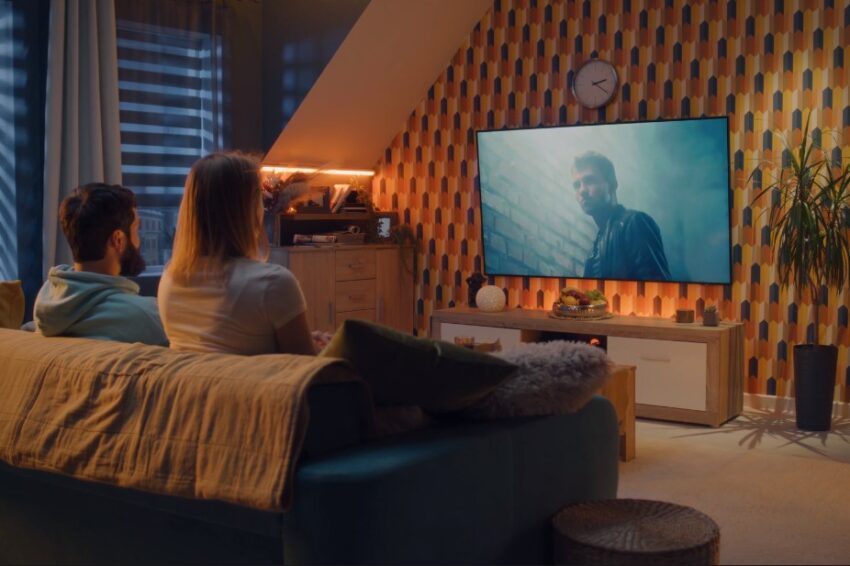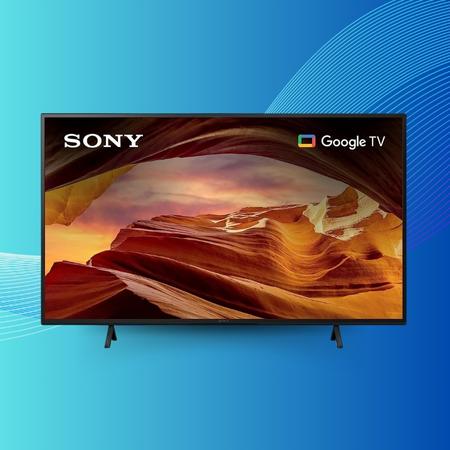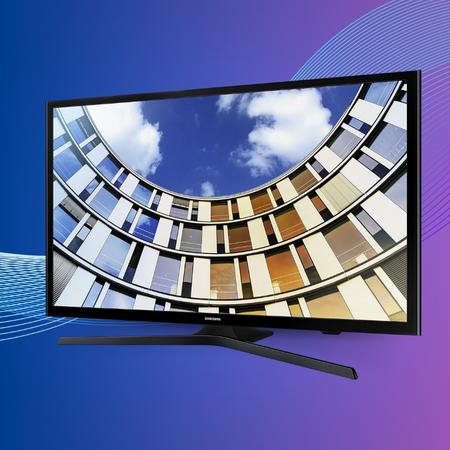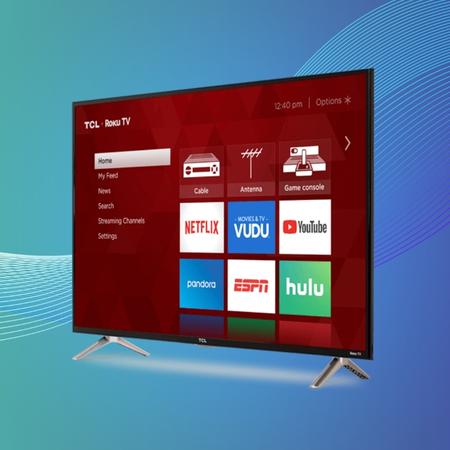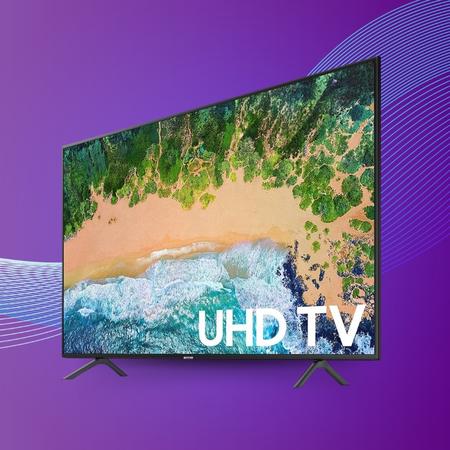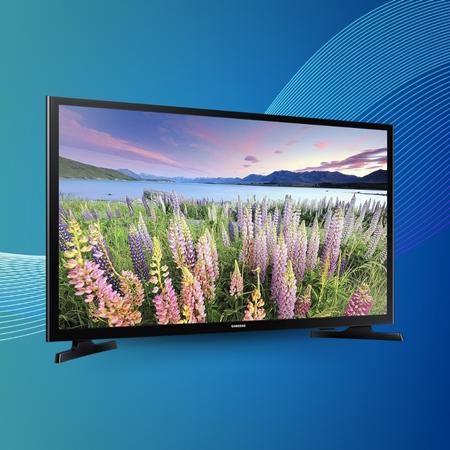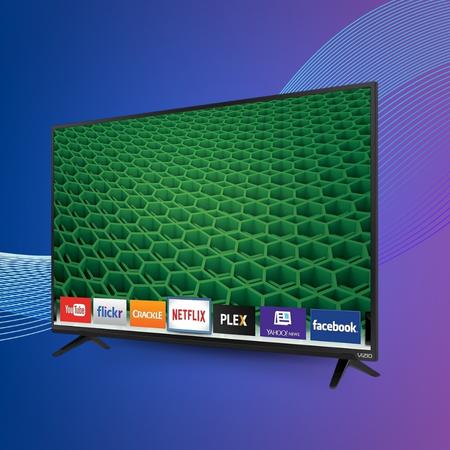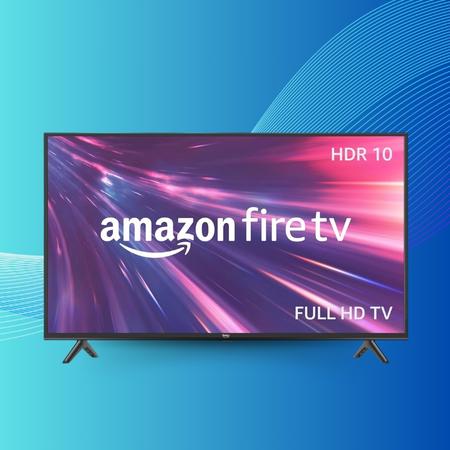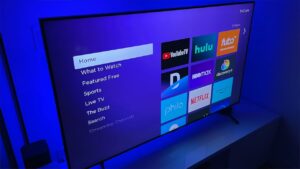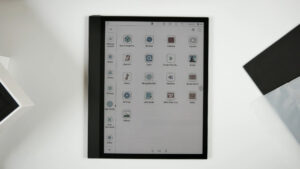Searching for the perfect 40-inch smart TV can be quite the journey, right? For me, this size is the ideal balance – it fits seamlessly into most spaces without dominating the room. Over time, I’ve had the chance to explore a plethora of smart TVs, and I’ve found some gems in the 40-inch category.
Navigating the sea of options can be daunting, but I’m here to simplify things. After extensive research and hands-on experience, I’ve curated a list of the best 40-inch smart TVs out there. By the end of this guide, you’ll have a clear picture of what’s best for your needs. Ready to embark on this journey with me?
Interesting Fact: The recommended viewing distance for a 40-inch TV is between 5 to 8.5 feet. If that matches your space, you’re on the right track.
1. Sony 43 Inch 4K Ultra HD TV X77L Series – Best Overall
The Sony 43-inch 4K Ultra HD TV from the X77L Series truly feels like a leap into the future of home entertainment. From the moment I powered it on, I was struck by the brilliance of its display.
The lifelike picture quality is no exaggeration, with the powerful 4K X1 processor taking center stage, ensuring every frame is a treat to the eyes. Scenes come alive with rich colors and meticulous detail, offering a viewing depth I had not experienced before.
While watching a visually intense action movie, the clarity and precision shone through, capturing even the most rapid sequences with ease. Streaming TV shows felt like a cinematic experience, with details so crisp that it sometimes felt like the characters were in the room with me.
For the gamers, playing on this TV is a revelation. The colors pop, the details are razor-sharp, and the motion remains smooth and jitter-free.
The integration of Apple Airplay allows seamless streaming from Apple devices, a feature I particularly appreciated, given the convenience it brings. The Motionflow XR 240 ensures that fast-moving scenes, which are typically a challenge for many TVs, are rendered smoothly.
Perhaps my favorite addition is the Google TV with Google Assistant. It not only expands the entertainment possibilities but makes searching and navigating a breeze.
Sony’s KD43X77L is a shining example of what a combination of top-tier technology and innovative features can achieve. In a market saturated with options, this model stands out as a beacon of excellence. Highly recommended for anyone seeking a top-tier viewing experience.
| Feature/Specification | Details |
|---|---|
| Screen Size | 43 Inches |
| Brand | Sony |
| Supported Internet Services | Prime Video, Disney+, HBO Max, Paramount +, Netflix |
| Display Technology | LED |
| Product Dimensions | 10.5″ depth x 38.38″ width x 25″ height inches |
| Resolution | 4K |
| Refresh Rate | 60 |
| Special Features | Apple Airplay, Motionflow XR 240, Google TV with Google Assistant, 4K X-Reality PRO, 4K X1 Processor |
- Impressive Picture Quality
- Google TV Integration
- Great Sound Quality
- Fast Remote Response
- Sony Brand Reliability
- Google TV issue with occasional lags.
2. Samsung Electronics UN40M5300A – Top Choice for Smaller Spaces
The Samsung Electronics UN40M5300A 40-inch Smart LED HD TV truly raises the bar when it comes to home entertainment. I was truly impressed with the Full HD 1080p resolution, which is an absolute game-changer, delivering visuals that are sharp, crisp, and incredibly detailed. Images come to life, making even the most mundane of content appear riveting.
But the magic doesn’t stop at the display quality. The Smart TV functionalities are where this model really shines. Gone are the days of fumbling with multiple remotes or navigating complicated menus.
This TV integrates everything seamlessly. Whether it’s binge-watching your favorite series, catching up on the latest news via live TV, exploring trending videos, or even scrolling through social media, it’s all available at your fingertips.
The in-built Wi-Fi ensures a steady connection, so streaming is smooth with minimal buffering.
One feature I particularly appreciated was the fluid browsing capability. The speed at which I could jump from one application to the next, or even between streaming platforms, was impressive. There’s no lag and no long loading times – just swift, effortless transitions that make for a user-friendly experience.
The Samsung Electronics UN40M5300A isn’t just a TV; it’s an entertainment hub, bringing together the best of visuals and smart functionalities. It’s well worth considering for anyone looking to upgrade their viewing experience.
| Feature/Specification | Details |
|---|---|
| Screen Size | 40 Inches |
| Brand | SAMSUNG |
| Supported Internet Services | Netflix, Amazon Instant Video |
| Display Technology | LED |
| Product Dimensions | 13.3″D x 36.3″W x 23.4″H |
| Resolution | 1080p |
| Refresh Rate | 60 Hz |
| Special Features | Flat |
- Stunning Full HD 1080p resolution.
- Intuitive Smart TV features with built-in Wi-Fi.
- Fluid browsing experience for faster control.
- Issues with peripheral device compatibility.
3. TCL S305 (40S305) TV model – Best Value for Money
From the moment I set up the TCL 43S305, its sleek and modern aesthetic was evident, seamlessly integrating into my living space. The real standout, however, is its Roku Smart platform.
A plethora of streaming options lay at my fingertips, with over 4,000 channels to browse. I was spoilt for choice with the vast library of movies and TV episodes. It was like having a comprehensive entertainment hub, all within this TV.
The 1080p Full HD resolution did not disappoint either. The clarity of images was commendable, creating an immersive viewing experience.
Paired with direct-lit LED technology, the vibrant colors and contrasts truly shone, enhancing my movie nights and binge-watching sessions.
Fast-paced movies and sports events are where the 120Hz refresh rate became a game-changer. Scenes transitioned smoothly with minimal motion blur, allowing me to capture every moment in its full intensity.
Moreover, the compatibility with Alexa and Google Assistant was a cherry on top. Switching between channels or adjusting the volume became effortless, thanks to the voice-controlled experience. It’s a feature I didn’t know I needed until I had it.
The TCL 43S305 is not just a TV; it’s a comprehensive entertainment solution. With its exceptional picture quality and smart functionality, it’s a worthy addition to any living room.
| Feature/Specification | Details |
|---|---|
| Screen Size | 43 Inches |
| Brand | TCL |
| Supported Internet Services | Alexa |
| Display Technology | LED |
| Product Dimensions | 7.5″D x 38.3″W x 24.4″H |
| Resolution | 1080p |
| Refresh Rate | 120 Hz |
| Special Features | Flat |
- Smart functionality with access to a vast range of streaming channels.
- High-quality picture with 1080p resolution and direct-lit LED technology.
- Compatibility with Alexa and Google Assistant for voice control.
- Legs are widely spaced and may not fit on narrow stands.
- Input switching through Roku menu can be cumbersome.
4. Samsung NU7100 4K Smart TV
The Samsung 50NU7100 Flat 40″ 4K UHD 7 Series Smart TV truly stands out as a testament to Samsung’s dedication to pushing the boundaries in television technology. The first thing that caught my eye was its sleek and modern design, seamlessly fitting into any living space. But, of course, it’s the viewing experience that steals the show.
The vibrant colors and sharp details are absolutely captivating. Scenes come to life in a way that feels like a jump from standard high-definition. The clarity and contrast, especially in 4K content, are remarkable, making even the most intricate details discernible. It’s a pleasure to watch, whether it’s the subtle hues of a sunset or the intricate patterns on a character’s clothing.
Streaming has never been smoother, with the smart features ensuring that my favorite content is always a click away. And for gamers? It’s a delight. The crisp graphics and fast refresh rate provide an immersive experience, making every gameplay moment feel more lifelike.
The Samsung 50NU7100 is not just another TV; it’s an experience. It blends design, technology, and performance into a package that confirms why Samsung remains a leader in the industry.
| Feature/Specification | Details |
|---|---|
| Screen Size | 40 inches |
| Brand | Samsung |
| Supported Internet Services | Amazon Instant Video, Netflix, YouTube, Browser |
| Display Technology | LED |
| Product Dimensions | 44.5 x 2.3 x 25.6 inches |
| Resolution | 4K UHD (3840 x 2160 pixels) |
| Refresh Rate | 120 Motion Rate |
| Special Features | PurColor, HDR, Smart TV with Universal Guide |
- Vibrant and clear picture quality.
- User-friendly interface with a universal guide.
- Seamless integration with popular streaming services.
- Sturdy build and sleek design.
- Impressive sound quality.
- Some users reported occasional software glitches.
- Limited customization options in picture settings.
5. Samsung UN40N5200AFXZA – Samsung Galaxy Compatibility
After testing this Samsung 40-inch Smart LED TV, I can confirm that it is definitely worth the price you are paying. Right off the bat, its Full HD 1080p resolution gives a stunning clarity that’s hard to rival, making every movie night or binge-watching session an absolute treat. But what truly sets this TV apart is its PurColor technology. The colors just pop! They are vibrant and, more importantly, realistic. It’s almost like looking out of a window rather than watching a screen.
Now, onto the contrast. The Micro Dimming Pro is an impressive feature that doesn’t go unnoticed. It’s fantastic to see those deep blacks juxtaposed against the vividly bright whites, adding an enhanced layer of depth to any scene. This is particularly noticeable in darker scenes, where the distinction between shadows and highlights is often lost on lesser models.
But it’s not just about the picture quality. This is a Smart TV, and it lives up to that title. The universal guide is user-friendly, making it a breeze to flip between shows or find a new favorite series. And for those who are accustomed to smart home devices, the compatibility with Amazon Alexa and Google Assistant is a godsend. No more fumbling for the remote—just a simple voice command, and you’re set.
If you’re in the market for a TV that offers top-notch visuals, true-to-life colors, and smart functionalities, you can’t go wrong with this Samsung 40-inch. It’s not just a TV; it’s an entertainment experience.
| Feature/Specification | Details |
|---|---|
| Screen Size | 40 Inches |
| Brand | Samsung |
| Supported Internet Services | Hulu |
| Display Technology | LCD |
| Product Dimensions | 2.9″ depth x 36.3″ width x 20.9″ height |
| Resolution | 1080p |
| Refresh Rate | 60 Hz |
| Special Features | Digital Clean View; Smart TV with Universal Guide; Eco Sensor; Works with Amazon Alexa and Google Assistant |
- Excellent Picture Quality
- User-Friendly Interface
- Good Sound Quality
- Value for Money
- Seamless Connectivity
- Remote Control Issues.
- Limited App Selection.
6. VIZIO D40-D1 D-Series 40 Inch – Best Image Quality
The VIZIO D40-D1 D-Series 40-inch Smart TV truly redefines what one can expect from a television of its size, and I was thoroughly impressed by this unit’s performance. At the heart of its brilliance is the Full-Array LED backlight, which delivers not just impressive brightness but also commendable light uniformity, ensuring each frame is consistently lit and free of the dark spots that often plague lesser models.
Vizio’s legacy of almost two decades in the TV industry is evident in the impeccable detail of its 1080p HD resolution. The images are sharp, the colors vibrant, and the overall picture quality exudes realism. If you’re a sports enthusiast or an action movie lover, the Clear Action 240 feature is a game-changer. It remarkably reduces motion blur, ensuring you capture every minute detail of that high-octane car chase or that breathtaking last-minute goal.
But it’s not just about picture quality. This TV is a nod to the future, bringing in the best of smart features. The VIZIO Internet Apps Plus is a delightful addition, offering an expansive library of movies, shows, music, and much more. Gone are the days of fumbling with tangled wires, as the built-in Wi-Fi ensures that accessing these apps is seamless and clutter-free.
In conclusion, the VIZIO D40-D1 D-Series 40-inch Smart TV is a testament to Vizio’s commitment to merging top-notch visual quality with forward-thinking features. For those seeking a 40-inch television that doesn’t compromise on quality or modern-day functionalities, this model is well worth checking out.
| Feature | Specification |
|---|---|
| Screen Size | 40 Inches |
| Brand | VIZIO |
| Supported Internet Services | Netflix, Pandora, Vudu, Hulu Plus, YouTube |
| Display Technology | LED |
| Product Dimensions | 35.97 x 8.27 x 23.46 inches |
| Resolution | 1080p |
| Refresh Rate | 60 Hz |
| Special Features | Flat |
- Excellent picture quality.
- User-friendly and intuitive remote.
- Built-in Wi-Fi provides easy and clutter-free internet connection
- Limited app selection compared to other platforms like ROKU.
- Some users experienced issues with firmware updates.
7. Amazon Fire TV 40″ 2-Series
As soon as I powered on this TV, the Amazon Fire TV stood out as an excellent unit, well worth the investment.
The high-definition display was nothing short of spectacular, breathing life into every frame with its vivid colors and impeccable detail. It truly feels like the scenes unfold right before your eyes, creating a visual treat for any movie or series enthusiast.
The magic doesn’t stop at visuals, though. Integrated with the Fire TV platform, the world of content is at your fingertips. Be it streaming my favorite series on Netflix or catching live TV broadcasts, the transition between them is effortless. And with such a wide array of apps and channels, I found myself exploring new content genres I’d previously overlooked.
One of the most impressive features is undoubtedly the voice remote with Alexa. Gone are the days of fumbling with buttons or typing out search queries. A simple voice command gets the job done, whether it’s changing the channel, adjusting the volume, or even dimming the lights in my living room. This feature seamlessly transformed my viewing habits, making the experience more intuitive and engaging.
In terms of aesthetics, its sleek design blends easily with any decor, ensuring that while it’s a technological marvel, it doesn’t dominate the room but rather complements it.
The Amazon Fire TV 40-inch 2-series HD Smart TV is a delightful fusion of style and substance, delivering an unparalleled entertainment experience.
| Feature/Specification | Details |
|---|---|
| Screen Size | 40 inches |
| Brand | Amazon |
| Supported Internet Services | Prime Video, Netflix, Hulu, Disney+, Apple TV, YouTube, and more |
| Display Technology | HD |
| Product Dimensions | 35.6 x 8.2 x 20.5 inches |
| Resolution | 720p |
| Refresh Rate | 60 Hz |
| Special Features | Voice remote with Alexa, HDMI ARC, multiple device input support |
- Vibrant HD display offers a captivating viewing experience.
- Integrated with Fire TV for a wide range of streaming options.
- Voice remote with Alexa for easy and intuitive control.
- Limited to 720p resolution, not 1080p or 4K.
- Minor sound quality issues.
8. Hisense 40-Inch Class
The vibrant hues and sharp contrasts on this television are what immediately caught my eye. Thanks to its high-definition LCD screen and the full array LED backlight, visuals come alive with unparalleled clarity. The integration of top streaming services is seamless, offering a treasure trove of content from Netflix, Disney+, YouTube, and the like at one’s fingertips.
A standout feature is the Alexa compatibility, which allows for hands-free operation. Simply call out your request, and the TV obliges. For those who prioritize smooth visuals, the Motion Rate 120 is a game-changer, ensuring there’s no lag during high-octane moments in sports, movies, or video games.
All in all, it’s a commendable addition to any contemporary living space. It is a TV that has its flaws, but for its current price and the set of features it delivers, it is a good investment.
| Feature/Specification | Detail |
|---|---|
| Screen Size | 40 Inches |
| Brand | Hisense |
| Supported Internet Services | Netflix, YouTube |
| Display Technology | LCD, LED |
| Product Dimensions | 3.4 x 35.2 x 22 inches |
| Resolution | 1080p |
| Refresh Rate | 60 Hz |
| Special Features | Flat, Gaming Mode, Motion Rate 120, Alexa Compatibility |
- High-definition resolution ensures a clear and vibrant picture.
- Instant access to popular streaming services for diverse entertainment.
- Gaming Mode offers improved input lag for a seamless gaming experience.
- Slow response times when launching apps.
Is a 40 inch smart TV Worth It?
First off, a 40-inch TV hits that sweet spot between being too large for a small room and too small for a spacious living area. It’s versatile, fitting comfortably in bedrooms, offices, and even compact living rooms.
Now, let’s talk smart features. With the rise of streaming platforms and the decline of traditional cable, having a smart TV is almost a no-brainer. It offers the convenience of accessing your favorite shows, movies, and even some nifty apps without needing an external device.
Plus, with voice assistants becoming more integrated into these TVs, it’s like having a personal assistant ready to find that obscure movie you suddenly remembered at 2 AM. So, in my book, a 40-inch smart TV is not just worth it; it’s a modern-day essential.
TV Viewing Distance Size Chart
When it comes to TV viewing, distance matters. It’s not just about having the biggest screen; it’s about how that screen fits into your space. So, how far should you sit from a 40-inch TV? Let’s break it down.
For a 1080p resolution, the ideal distance is between 5 to 6.5 feet. If you’re lucky enough to have a 4K TV, you can cozy up a bit closer, around 3.5 to 5 feet.
But remember, these are just guidelines. Everyone’s comfort level is different. Some prefer to be up close and personal with their favorite characters, while others like a broader view. The key is to find a distance that feels right for you, ensuring you can see all the details without straining your eyes.
| TV Size | Viewing Distance |
| 32″ | ~5.0 feet / 1.52 m |
| 40″ | ~5.5 feet / 1.68 m |
| 43″ | ~6.5 feet / 1.98 m |
| 50″ | ~7.0 feet / 2.13 m |
| 55″ | ~8.0 feet / 2.44 m |
| 60″ | ~8.5 feet / 2.59 m |
| 65″ | ~9.0 feet / 2.74 m |
| 70″ | ~9.5 feet / 2.90 m |
| 75″ | ~12.0 feet / 3.66 m |
FAQ
Is OLED better than 4K?
OLED and 4K address different facets of a television’s display, making them not directly comparable. OLED, which stands for Organic Light Emitting Diode, is a display technology that employs self-lit pixels to produce images that are vibrant and lifelike, characterized by deep blacks and brilliant colors.
The unique feature of OLED is that each pixel can be individually controlled, allowing for unparalleled contrast and color precision. On the other hand, 4K pertains to a TV’s resolution. A 4K television possesses four times the pixel count of a standard 1080p HD TV, translating to a crisper and more detailed visual output.
Many premium TVs combine both OLED technology and 4K resolution, delivering an image that is both sharp and vibrant. The preference between OLED and 4K boils down to individual tastes: while OLED offers a more realistic image, 4K ensures a sharper and more intricate visual.
OLED vs QLED?
OLED and QLED are both advanced display technologies, but they differ in their mechanisms of image production. OLED utilizes self-lit pixels that can be individually controlled, resulting in profound blacks and vibrant colors. This technology doesn’t need a backlight, leading to a slimmer display with broader viewing angles.
In contrast, QLED, or Quantum Light Emitting Diode, employs quantum dots—tiny particles that emit colored light when illuminated. QLED TVs typically use a backlight to activate these quantum dots, producing images that are bright and vivid.
While OLED is often praised for its superior contrast, deep blacks, and expansive viewing angles, QLED is lauded for its brightness and color accuracy, especially in well-lit settings.
LG vs Samsung?
Choosing between LG and Samsung often boils down to individual preferences. If you’re inclined towards a brighter display, Samsung’s QLED TVs might be more appealing. However, if you prioritize deeper blacks and a more expansive viewing angle, LG’s OLED TVs could be the better choice.
Will a Smaller TV Offer Any Features?
Smaller TVs can both offer and lack certain features compared to their larger counterparts. The immersion level a TV provides is closely linked to its size. For instance, a 40-inch TV won’t provide the same level of immersion as a 75-inch TV. However, when considering features, it’s essential to note that many TV models come in various sizes but offer similar features across the board.
This means that a smaller TV might have the same functionalities as its larger version if they belong to the same model series. Features to consider include contrast ratio, viewing angle, response times, motion interpolation, 24p playback, and smart capabilities. When deciding on the best TV size or features, it’s crucial to consider both the technical specifications and personal viewing preferences.
Conclusion
Choosing the right TV size and understanding where to place it can feel like a daunting task. But once you’ve got the knowledge, it’s all about personal preference.
A 40-inch smart TV offers a blend of versatility, modern features, and a size that’s just right for many spaces. And while the viewing distance can vary based on resolution and individual comfort, the guidelines provided can serve as a starting point. At the end of the day, it’s all about creating a viewing experience that feels right for you.
So, whether you’re binge-watching the latest series, revisiting classic films, or cheering on your favorite sports team, make sure you’re doing it in a way that brings you the most joy. After all, that’s what TV watching is all about, right?
